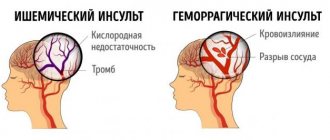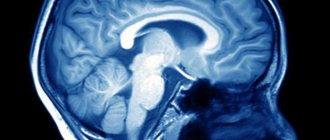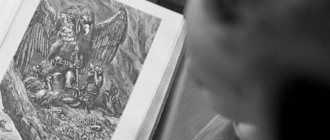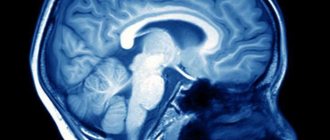Article:
Children who begin to learn writing sometimes encounter manifestations of dysgraphia.
It manifests itself already during the first attempts at writing in the form of gross errors. At first, parents assume that the problem is the child’s banal inattention, but experienced teachers will quickly distinguish a disorder called dysgraphia. This is a deviation in the formation of certain mental functions, in which minor problems with the speech apparatus are also observed. The child writes words in reverse and makes a huge number of grammatical errors. The handwriting is illegible. The defect manifests itself more as problems during writing, but it is associated with disruption of the functioning of some parts of the brain responsible for speech.
General information
Dysgraphia is a writing disorder in the form of systematic phonetic errors and incorrect spelling of letters. Such errors are permanent and are not related to knowledge of the grammatical rules of the Russian language.
Dictations or presentations for children with this disorder are replete with errors, which reduces self-esteem and interferes with learning, developing, and communicating with classmates. This problem cannot be solved on its own and requires the intervention of specialists, including psychotherapists, neurologists and others.
According to studies, dysgraphia in various stages is detected in 53% of second grade students, 37% of middle school students. Based on these data, we can conclude that this disorder is stable. Depending on the problems and symptoms, various types of dysgraphia are distinguished, also classified by severity.
Pathogenesis and mechanism of occurrence
Writing is a multi-level mechanism, the implementation of which involves different systems:
- speech motor;
- auditory;
- visual;
- motor.
They successively transform articulemes into the form of phonemes, the phoneme turns into a grapheme, and those into a kineme. To develop writing, a child must have a good level of oral speech. It is now known that the pathogenesis of dysgraphia is associated with incorrect or untimely lateralization of brain functions. These processes end approximately by 6-7 years, that is, by the beginning of school.
If there is a delay in lateralization and the simultaneous presence of left-handedness, disturbances occur in the cortical region. With dysgraphia, a child experiences incomplete development of perception, thinking, and memory. The emotional-volitional sphere of the child, visual analysis and other aspects of the child may suffer.
Causes of dysgraphia in children
Before answering the question “dysgraphia—what is it,” you need to understand its causes. This can happen for a variety of reasons:
- birth injuries;
- infectious diseases;
- genetic predisposition;
- neglected child rearing.
Dysgraphia is often accompanied by a number of concomitant diseases that have already been diagnosed in the child. This disorder primarily manifests itself in the incorrect spelling of letters and syllables. Patients with this diagnosis are not able to write correctly, as they have hearing and visual impairments. The child cannot properly process the information received, synthesize it, and analyze it.
Causes of dysgraphia in adults
The reasons for the imperfection of written speech in adults can be provoked by external and internal factors. The main causes of dysgraphia in adults are:
- brain injuries or surgical operations;
- brain tumors;
- some infectious diseases, such as meningococcus;
- inflammatory processes;
- stroke;
- social conditions;
- lack of oxygen in the blood (asphyxia).
Social factors may include pedagogical neglect, incorrect speech of people around the child, little communication between the child and other children and adults, and bilingualism.
A person with dysgraphia makes systematic errors when writing. They are stable in nature, and the person knows all the grammatical rules well.
The most basic reasons for development are insufficient functioning of speech and hearing (analyzers). The child cannot independently analyze speech and synthesize it.
Mastering written speech is directly related to the development of all aspects of speech function, therefore, children with mental retardation, developmental disabilities, phonemic underdevelopment, and sound pronunciation disorders are at risk for dysgraphia. That is why it is extremely important to undergo an examination by a speech therapist by school age and correct existing problems.
Causes of dysgraphia in adults
Dysgraphia is most often diagnosed in younger schoolchildren. However, up to 10% of disorders occur in adults as a result of various factors that negatively affect the human psyche. Among the main reasons causing problems with written speech in adults, experts name:
- head injuries;
- cerebral hemorrhage;
- unsuccessful brain surgery;
- formation and growth of tumors in the brain;
- meningococcal infections;
- strokes;
- birth injuries with long-term consequences;
- disadvantaged social conditions;
- suffocation due to insufficient oxygen supply to body tissues.
Dysgraphia in adults has classic manifestations in the form of typical persistent errors that are difficult to correct.
Note. Dysgraphia does not indicate a decrease in a person’s level of intelligence. The cause of its occurrence in adulthood is most often associated with a disruption in the interaction between brain parts.
Dysgraphia in adults (especially those developed due to hemorrhages) is most often irreversible, but for children the prognosis is more favorable: most often, young patients can be successfully rehabilitated and returned to a full life.
Types of dysgraphia
There are different types of dysgraphia:
- Articulatory-acoustic. The child pronounces some sounds incorrectly, pronouncing them silently; he makes grammatical errors when writing them. When correcting this type, it is necessary to work on the pronunciation of sounds, words, and phrases.
- Acoustic. Sounds are pronounced correctly, but can be confused with similar ones, for example, replacing voiced sounds with unvoiced ones - b-p, d-t, z-s; s-sh, z-zh. The degree of softness of sounds may be confused.
- Optical. The child has difficulty writing letters, adds additional elements to them - dashes, dots, sticks, or skips the letter entirely.
- Dysgraphia with imperfect analysis and synthesis. The child skips or repeats words, can swap letters, syllables, write together or separately, but incorrectly.
- Ungrammatical. Usually detected in primary school. During this period, the child begins to write phrases and simple sentences, making mistakes in endings, suffixes, and confusing declensions, cases, and genders.
All speech disorders are characterized by problems with the sequence of spelling words. Writing is a process of operation of a variety of analyzers and systems, the interaction of which is responsible for the child’s skills and ability to write correctly.
Acoustic
In another way, this type of disorder is called phoneme recognition dysgraphia. With it, the child cannot distinguish sounds correctly. This phenomenon manifests itself especially often when teaching writing. Acoustic dysgraphia has the following characteristic symptoms:
- replacing sounds that are similar to each other (ringing, hissing, whistling, hard, soft);
- errors in the softness of sounds;
- transmission of individual sounds;
- substitution in one word;
- combining several words into one without spaces.
The most common mistakes are the words “ball - ball”, “perch - perch”.
Optical
The following mistakes are most often made in writing:
- incomplete spelling;
- mirror writing of letters;
- presence of unnecessary elements;
- confuses letters that differ in one element (p-t, sh-shch)
- inability to distinguish letters of similar spelling.
This type develops on the basis of visual-spatial impairments and their incomplete formation. The child can change letters in places.
Ungrammatical
Manifestations of dysgraphia are caused by a general underdevelopment of grammatical structure. There are problems in the morphological and syntactic components. Symptoms of this disorder are:
- difficulties in logical connections between sentences;
- violations of the semantic component in the written text;
- omission of sentences or parts thereof;
- problems in the logical sequence of writing;
- the child does not distinguish between singular and plural numbers;
- replacing endings;
- incorrect word formation, consistency of words with each other;
The agrammatical type of dysgraphia is characterized by incorrect use of cases, genders, incorrect construction of constructions, manifested in the omission or replacement of prepositions and other elements of sentences. The appearance of such dysgraphia is facilitated by speech disorders (alalia, dysarthria).
Articulatory acoustic
The articulatory-acoustic type of dysgraphia in children is manifested by mixing letters, omitting them, and substitutions that are similar in sound. Symptoms may include:
- inability to pronounce sounds and perceive them;
- phonetically similar sounds are replaced;
- there is the addition of extra letters and syllables in a word;
- improper softness when writing;
- incorrect spelling of individual letters.
These errors are practically not corrected, appearing again every time. At the same time, the comments of a teacher or parent do not bring any results. It is necessary to focus correction work on auditory differentiation, especially on voiced-voiceless, soft-hard sounds and correctly pronounce them.
Dysgraphia due to underdevelopment of language analysis and synthesis
This phenomenon is the result of a violation of the analysis and synthesis of speech, the division of one sentence into separate, constituent words. There are violations in phonetic analysis. In general, this type of dysgraphia has the following symptoms:
- the child misses the letters (rain - rain, boy-boy);
- extra letters and syllables are rearranged or added;
- fused writing of individual words as one whole;
Experts distinguish between specific and nonspecific writing disorders, which are associated with educational, social, and psychological factors. The child has difficulty with the sequence of writing speech.
Mixed forms of dysgraphia
This type is one of the most common of all dysgraphias. This happens when several parts of the child’s written language are insufficiently formed. This phenomenon complicates and prolongs correctional work with such a patient. The characteristic features of this disorder are the combination of several speech disorders. Moreover, this happens several times more often in boys than in girls.
Dysgraphia - what is it?
Dysgraphia is a specific written language disorder that manifests itself in persistent errors.
It develops due to the immaturity of the higher parts of the central nervous system. The disease does not allow children to master the grammatical features of the language. According to statistics, more than 50% of primary schoolchildren and more than 30% of middle school students have dysgraphia. This characterizes the form of speech impairment as unstable. The prevalence of the diagnosis is explained by the fact that about half of kindergarten graduates go to school with phonetic-phonemic underdevelopment or general speech underdevelopment. These problems make the process of fully mastering literacy impossible.
Depending on the severity of disorders in the writing process, speech therapists distinguish:
- dysgraphia (writing is distorted, but functions as the main means of communication);
- agraphia (primary inability to master writing, complete loss of the skills necessary for this).
Since writing and reading are inextricably linked, dysgraphia and dyslexia (reading impairment) are very often diagnosed at the same time.
Types of dysgraphia in primary schoolchildren:
Taking into account the immaturity of certain writing operations, the following types of dysgraphia are distinguished:
- Articulatory-acoustic dysgraphia (there are disturbances in sound pronunciation, articulation, and phonemic perception).
- Acoustic dysgraphia (problems related to phonemic recognition).
- Agrammatic dysgraphia (underdevelopment of the lexico-grammatical aspect of speech).
- Optical dysgraphia (immaturity of visual-spatial imagination).
- Dysgraphia, caused by the immaturity of language synthesis and analysis.
Dysgraphia in adults and children is not always represented in “pure” forms. Mixed problems are very common.
Modern classification of dysgraphia:
Modern speech therapy distinguishes specific and nonspecific writing disorders.
The first group includes:
- dysgraphia (dysphonological, metalinguistic);
- dysorthography (syntactic, morphological).
Nonspecific writing disorders are associated with pedagogical neglect, mental retardation, etc.
Symptoms and manifestations of dysgraphia
It is difficult to establish an accurate diagnosis of dysgraphia without a specialist. Usually, its presence becomes known at school age, when the child writes letters incorrectly. This is often confused with the fact that the child simply does not understand the grammar of the language, for which teachers reduce grades, therefore, the performance of such a child worsens.
Errors due to dysgraphia have nothing to do with mastering the rules of the Russian language. The errors themselves are the same, but numerous. Most often, the child makes mistakes when writing combined/separate words; syllables or letters are omitted. Such symptoms should cause concern for parents and teachers at school. Dysgraphia in schoolchildren requires special correctional work from specialists; the sooner such work is started, the faster the child gets rid of it.
Dysgraphia in schoolchildren can also cause poor handwriting that is incomprehensible to adults. Children with this disorder have slow writing speed and severe unevenness. The height and width of letters are constantly changing, even in one word.
Diagnostic methods
Dysgraphia in primary schoolchildren is diagnosed by studying oral and written speech. Only after this can an appropriate correction be prescribed. It is also necessary to consult a neurologist, ophthalmologist, or ENT specialist. The degree of formation is determined by a speech therapist.
The examination of a child consists of several stages. First, the child’s vision and hearing and the state of the central nervous system are assessed. Next, an analysis of motor skills and articulation is carried out. It is important to consider whether you are left-handed or right-handed. It is important to analyze the phonetic mechanism, sound pronunciation, the child’s vocabulary, and literacy level. After this, a study of the patient's letter is carried out.
A child with dysgraphia rewrites written and printed letters, words, takes dictation, performs exercises using deformed sentences and other tasks. After this, taking into account all the information received, a speech therapist’s conclusion is issued with recommendations for correction.
Diagnostics
Parents usually encounter dysgraphia in elementary school. At first, the deviation seems to be a very specific problem, because the child usually does not lag behind in development. The child seems to understand the rules, but continues to make the same mistakes. Signs of the disease are specific rearrangements, substitutions, breaks or additions of letters and syllables, regardless of the level of literacy. Patients with dysgraphia syndrome write very slowly, the written letters are difficult to distinguish visually, and their handwriting is usually illegible.
When diagnosing a disorder, symptoms unrelated to speech may appear: poor memory, forgetfulness, easy distractibility, inability to concentrate, lethargy when performing tasks, or, on the contrary, hyperactivity and excitability.
To make a correct diagnosis, parents are recommended to contact various specialized specialists: psychologist, neurologist, ophthalmologist (ophthalmologist), otolaryngologist (ENT doctor), speech therapist. Only after consultation and conclusion of each of them can we talk about the emerging problem.
Note. If you suspect dysgraphia, you should not engage in self-diagnosis and self-medication, as precious time for correction may be lost. Timely treatment begins largely determines the success of the entire therapy.
Specialists will be able to distinguish between violations and ordinary ignorance of the rules of written and oral speech with the help of special tests and surveys. Determining the type of dysgraphia is of great importance, since the specifics of the correction depend on this (to which the greatest attention should be paid).
When diagnosing written speech disorders, the following activities are carried out:
- study and analysis of written work, search for typical errors;
- analysis of the child’s intellectual development;
- diagnostics of the state of the central nervous system, hearing and speech apparatus;
- determining the leading hand;
- analysis of skills to identify sounds by ear;
- assessment of phonemic analysis and synthesis;
- determination of vocabulary features.
A child or adult is offered printed and written texts to copy, a letter from dictation, and a description of a picture. Dictation remains one of the main types of testing: it allows you to identify and recognize typical errors characteristic of dysgraphia. Based on the data obtained, a final speech therapy conclusion is made.
Dysgraphia correction
Correction of dysgraphia in younger schoolchildren depends on the severity, neglect and other individual characteristics. With the right approach and the support of teachers, it is quite possible to completely overcome this disorder, but you should be patient, as this process is slow, complex, and painstaking. It is most difficult to carry out correctional work with children of senior school age. In this case, there may be other associated speech and writing disorders. The rehabilitation period in this case may take a long period and may not disappear completely. Correction depends on the type of disorder, the age of the child, and his physiological characteristics.
It is impossible to fix this problem on your own. It will be necessary to involve narrow specialists in this work, such as neuropsychologists, psychologists and others. Speech school will have better results in working with writing disorders.
The bulk of the work falls on the speech therapist. He draws up a rehabilitation program, determines exercises on sound pronunciation, the formation of lexical and grammatical structure, phonemic speech recognition, motor skills, psychology and other factors of correctional work.
The most effective correction methods are:
- written exercises for recognizing similar letters (for a diagnosis of optical dysgraphia);
- tasks for memory, development of thinking and perception;
- exercises for the development of sound analysis in the form of games (puzzles, riddles);
- work on the formation of lexical and grammatical structure;
- tasks for the correct understanding of letters, sounds, words;
- production of sounds, automation of speech.
If a child has organic reasons for the development of dysgraphia, drug treatment may be included. Massage, exercise therapy, and physiotherapy may be prescribed. Such measures influence these reasons, leveling their significance on the ability to write.
Speech therapy correction
The child must have clear, correct auditory differentiation of sounds. If this requirement is not achieved, further correction makes no sense. The duration of work is individual for each child. Classes with a speech therapist can be conducted both in groups and with each child individually.
During classes, children perform various tasks:
- verbal tasks;
- visual lessons;
- practical lessons.
Stories, fairy tales, communication with the child, and descriptions of the qualities and properties of individual objects are used as verbal tasks. Visual methods involve observing and analyzing individual sounds and letters. In practical classes, acquired skills, knowledge and abilities are consolidated. There are also combined classes and methods.
A speech therapy session has its own structure, depending on the stage. At the first stage, there is a need to interest the child and create a certain level of motivation for further correction. The second stage is providing the student with the opportunity to gain new knowledge and information and synchronize it with what is already available. The third stage is characterized by understanding the information received and using it.
Correction for younger schoolchildren depends on the age of the child and is selected based on the severity of the violations and its degree.
Drug treatment
Drug treatment should be prescribed exclusively by a specialist. Self-medication of these disorders can be dangerous to the health and life of the child.
Home exercises with parents
It is impossible to solve the problem of dysgraphia exclusively at home. Self-study exercises can be an additional solution, but not the main one. Correction for schoolchildren differs in its activities depending on the age of the child. The exercises themselves are prescribed by speech therapists, and they are carried out at home under the control and with the help of the parents themselves. There are several simple but effective exercises that you can do on your own:
- Exercise labyrinth. The child must draw a line on the paper without allowing any breaks in it. The child moves only his arm and changes the position of his fingers and hand, but not the sheet itself.
- Finding certain objects or pictures. The child must sketch or shade them.
- Exercises to develop attention when detecting optical-spatial problems. For this, there are tasks in the form of constructing letters, symbols, and signs. You can search for letters in pictures or objects, insert missing words into a sentence.
- Exercises to develop clear articulation of problematic sounds. The parent and the child look for words with these sounds, learn rhymes, songs, tongue twisters and other tasks. Games for the development of the lexical and grammatical component of speech. This could be “Say the opposite”, “Find the whole”.
- Logorhythmic gymnastics (logorhythmics) classes.
Systematic implementation of exercises on a daily basis will shorten the rehabilitation period and give the first positive changes faster.
Correction
Dysgraphia can be corrected; this requires some effort on the part of parents and specialists. This may take several months or even years (depending on the age of the child and the severity of the problem). If you systematically work with your child, then as a result he will be able to study according to the general education program in a regular school.
Currently, many programs and techniques have been developed to overcome dysgraphia. Treatment of this disease should be carried out in a complex manner: with a speech therapist, psychologist, neurologist and other specialists. During the correction, it may be necessary to transfer the child to a specialized school or hire a tutor. General approaches to correcting dysgraphia involve the use of the following techniques:
- enrichment of the lexical vocabulary;
- development of coherent and competent oral speech;
- development of literacy in writing;
- development of auditory and spatial perceptions;
- work on strengthening memory;
- improvement of thinking abilities;
- developing the ability to perceive information by ear;
- exercises to develop fine motor skills and motor functions;
- increasing analytical skills;
- consolidation of acquired skills in writing.
If dysgraphia is a consequence of an underlying disease, children are prescribed courses of medications, as well as physiotherapeutic treatment (massage, exercise therapy, hydrotherapy, magnetic therapy, acupuncture).
Systematic and targeted work with a speech therapist, neurologist and psychologist helps dysgraphics develop writing skills, develop memory, and eliminate shortcomings in written speech. At the same time, a person’s self-esteem gradually increases and his communication skills improve; mental health is restored.
In the correction process, speech games, graphical highlighting of word elements, and visual materials with outlines of letters and words are used.
Many famous people suffered from this disease, which did not prevent them from achieving significant success in their field: Albert Einstein, Tom Cruise, Walt Disney, Fyodor Bondarchuk, Vladimir Mayakovsky.
Consequences in the absence of correction
Ignoring problems with dysgraphia can cause serious problems, such as:
- inability to fully master the school curriculum, especially the subjects “Russian language” and “literature”;
- difficulties with written surveys;
- intellectual retardation due to failure to master school knowledge;
- anxiety;
- suspiciousness;
- communication problems with peers and classmates;
- low self-esteem;
- deviance of behavior.
The need to write something will cause discomfort and fear in the child. There may be problems with mathematical terms and others.
Prevention
Activities to avoid dysgraphia should be carried out before the child enters primary school.
Preventive work includes the development of higher mental functions, due to which the following is noted:
- normal acquisition of writing and reading skills;
- improvement of visual and auditory differentiation, spatial representation;
- restoration of graphomotor skills;
- normalization of sensory functions.
With children prone to dysgraphia, it is necessary to draw, sculpt, and perform tasks to develop speech and expand their vocabulary.
Prevention of writing disorders in children
Experts are confident that it is impossible to prevent dysgraphia, since its exact causes have not been fully studied. However, risk groups have been identified whose representatives suffer from it more often than others:
- delayed psychological development;
- left-handers retrained to be right-handed;
- children with articulation problems;
- bilingual children;
- learning from rude or insufficiently competent teachers;
- hyperactive children;
- children who started school early.
Prevention consists of certain skills - attentiveness, perception of the surrounding space, memory, insufficient vocabulary. If parents or a teacher notice that the child is making the same mistakes, it is necessary to seek help from a speech therapist or neurologist in order to begin corrective work on time.
Prevention of dysgraphia
Experts cannot name the exact causes of dysgraphia. In addition, it is believed that such a violation of written speech cannot be prevented. However, there are known risk groups whose representatives more often suffer from the presence of such a deviation. This:
- Bilingual children;
- Patients with mental retardation
- Children who were retrained to write with their right hand
- Hyperactive children
- Children who started learning too early
Prevention measures include training memory and attentiveness, increasing vocabulary. It is important to know that if a child constantly makes the same mistakes when writing words, there is no need to postpone visiting a speech therapist until later. If a child has a written speech disorder, the sooner correctional work is started, the faster and easier it will be to get rid of the problem, which is fraught with serious consequences for the child in the future.











